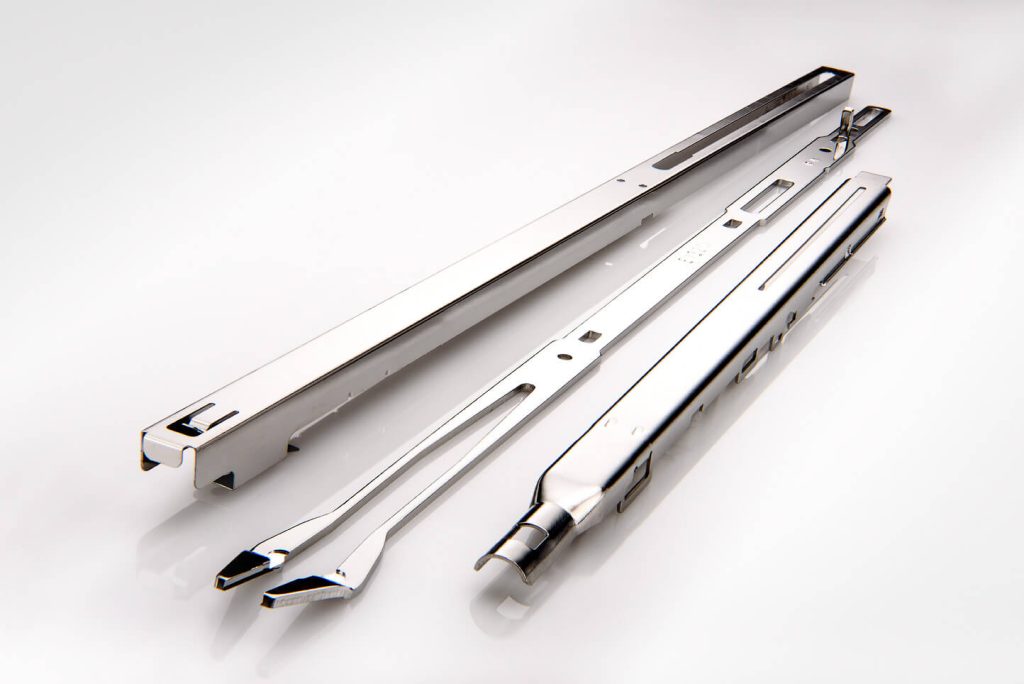What is ISO 13485?
Understanding ISO 13485
ISO 13485 is a standard that applies specifically to medical devices. ISO 13485 is designed to be used by organizations who are involved in the design, production, installation and servicing of medical devices. Let’s take a look at some of the benefits of ISO 13485 compliance and why its important for product engineers and how it applies to electropolishing stainless steel components for medical devices.
Who is ISO?
ISO, or the International Standards Organization is an independent, non-governmental organization that collaborates with experts from around the world to share knowledge and develop evidence-based, international standards.
ISO 13485 focuses on the medical device manufacturing industry, which includes everything from implants to in-vitro diagnostic devices. The standard outlines criteria related to design, production, installation, and servicing processes that must be met in order to comply with regulations.
The benefits of ISO 13485 Certification
“We were the first electropolishing job shop in the country to receive our ISO certification,” says Amy Prigmore CEO of New England Electropolishing. “We were ISO 9001 certified in 1997, and we are now ISO 13485 certified as well.”
The main benefit of ISO 13485 certification is that it helps manufacturers demonstrate their commitment to safety and quality assurance. This can lead to increased customer confidence and trust in their products, as well as boost their reputation among other medical device manufacturers who are also certified. Additionally, certification can open up new markets by helping manufacturers meet the regulatory requirements needed to export their products around the world. Finally, ISO 13485 certification can lead to cost savings since it helps improve operational efficiency by streamlining processes and reducing waste.
Since we at New England Electropolishing believe that safety and quality are of the upmost importance, our processes fully conform to the ISO 13485 standards.
“Our product is used predominantly in the medical industry, so ensuring that product quality is consistent in meeting our customer expectations is key to what we do here. Visual inspection, attention to detail are the key aspects of our process that ensure what the customer is receiving is meeting their expectations,” says Erica Bert, Quality Manager.
Design and process validations demonstrate that a medical device and all associated manufacturing and testing processes are capable of consistently producing products that will meet all regulatory requirements and perform consistently, safely, and with efficacy.
Our entire process has been validated and certified by third-party independent auditors to obtain our ISO 13485 certification, which is required by many of our customers.
There are three distinct phases involved with validating our electropolishing processes.
- Installation Qualification (IQ)
- Operational Qualification (OQ)
- Performance Qualification (PQ)
Our multi-phase validation approach and comprehensive IQ/OQ/PQ reports provide our customers with clear insight into our quality management system. The organizational aspects surveyed during the validation process provide objective evidence that NEE’s success is the result of having competent, trained people, well-managed processes, and robust process monitoring and PM programs.
At New England Electropolishing, we have highly controlled processes in place that ensures material removal is precise and repeatable every time.
Electropolishing Resources

What is Electropolishing?
Electropolishing is an electrochemical and reverse plating process that removes the outer layer of skin on a metal...

The Electropolishing Process
The electropolishing process is initiated by immersing a metal part into a temperature-controlled bath of electrolyte...

Benefits of Electropolishing
Curious about the benefits of putting your parts through the electropolishing process? Read along below where we...

How Much Material Does Electropolishing Remove?
Electropolishing, when done properly is a highly controllable process which removes as little as...

How Much Will Electropolishing Improve the Surface Finish of My Part?
Ra and RMS are both representations of surface roughness. Ra is calculated as the roughness average of a surface’s...

Electropolishing Frequently Asked Questions
Learn the difference between electropolishing and electroplating as well as how the electropolishing process works...

What is ASTM B912?
ASTM B912 is an industry standard for the passivation of stainless steel alloys through electropolishing...

What is ASTM A967?
ASTM A967 is an industry standard specification for the chemical passivation treatments for stainless...

What is ISO 13485?
ISO 13485 is a standard that applies specifically to medical devices. ISO 13485 is designed to be...
